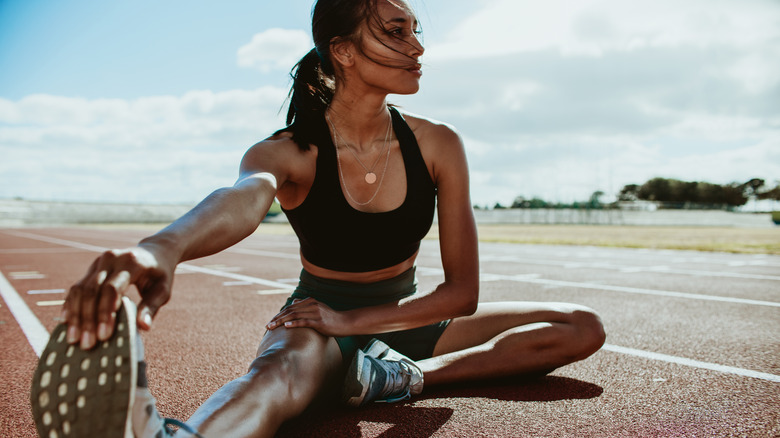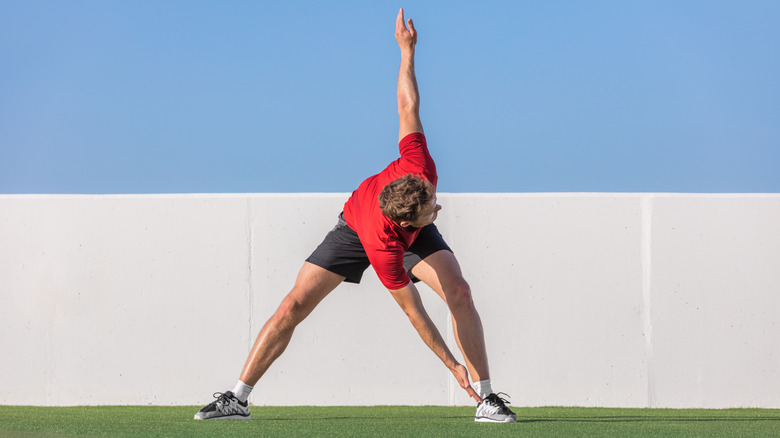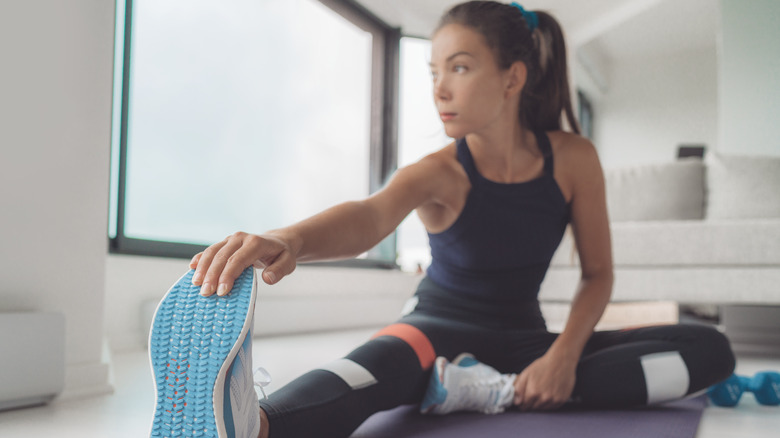Dynamic Versus Static Stretching: What's The Difference?
Stretching might remind everyone of that strict teacher in gym class, but as we find new ways to challenge our bodies, stretching becomes more critical. According to the National Academy of Sports Medicine, stretching allows us to incorporate a full range of motion in our joints and muscles to power us through stronger workouts. It helps us stave off injury because our increased flexibility prevents muscle imbalances that can wreck our form. In addition, if we have sore muscles because we didn't stretch after yesterday's hard workout, we're less likely to want to work out today. Stretching also allows us to maintain our everyday activities such as picking up something that fell on the floor.
Stretching doesn't only improve the range of motion for one muscle group. A 2021 systematic review in Sports Medicine found that four minutes of passive stretching of one muscle benefits the overall range of motion in the body. Dynamic stretching in older adults can significantly improve the range of motion in the hips, according to a 2019 study in the Journal of Sports Science and Medicine. However, it's important to know that different types of stretching, such as dynamic and static stretching, can offer different benefits.
Dynamic stretching is about warming the muscles
According to LiveStrong, dynamic stretching calls for us to move our joints and muscles through their full range of motion. The emphasis is on movement. The muscles, joints, and connective tissues get warm as we perform these movements. Because you're strengthening while you're stretching, dynamic stretches help strengthen the tissues around the joints, making them more stable. Dynamic stretches also make you a little more alert, so they're best to do in the morning or before a workout. You'll also want to start slow with easier movements, particularly if you've been sitting or lying down for a while. In other words, doing jumping jacks as soon as you get out of bed in the morning may not be the best idea.
Healthline suggests dynamic stretches such as circling your hips and arms while standing. You can also do some lunges with no weights. Each movement should be performed for 30-60 seconds, according to LiveStrong. If you're a runner, you'll also want to add leg swings before each run, according to the Hospital for Special Surgery.
Static stretching is about relaxing the muscles
Static stretching is our classic idea of stretching, according to LiveStrong. It requires holding a position for a long time so that the muscles can not only lengthen but also relax, especially if you incorporate some deep breathing. Like dynamic stretching, static stretching also improves the range of motion. Static stretching is best done after a workout or in the evening to help cool down the body, according to the National Academy of Sports Medicine. If you do it before your workout, it might inhibit your strength, power, and performance, according to a 2013 review in the Scandinavian Journal of Medicine & Science in Sports.
The Newcastle Sports Injury Clinic suggests stretching the hamstrings one leg at a time while seated on the ground. You can stretch the calves by leaning against the wall. Be sure to stretch each muscle enough so that there's a little bit of tension but not so much that it begins to hurt. You can hold each stretch for as little as 10 seconds, but try not to bounce.
The National Academy of Sports Medicine says that you can improve your flexibility and range of motion by stretching each major muscle group two or three times a week in addition to your regular workouts.



